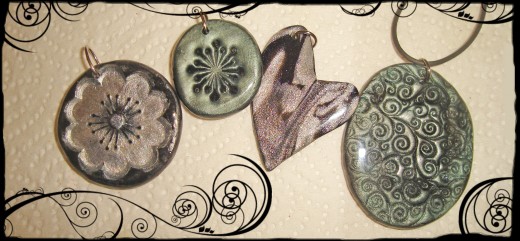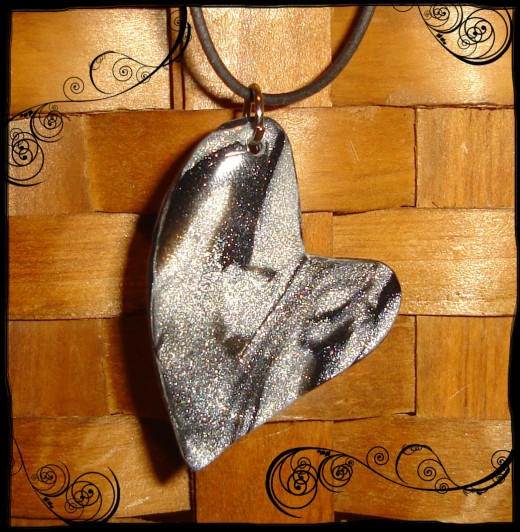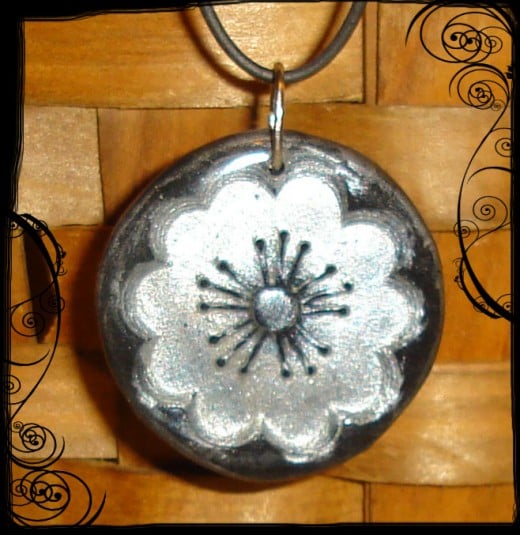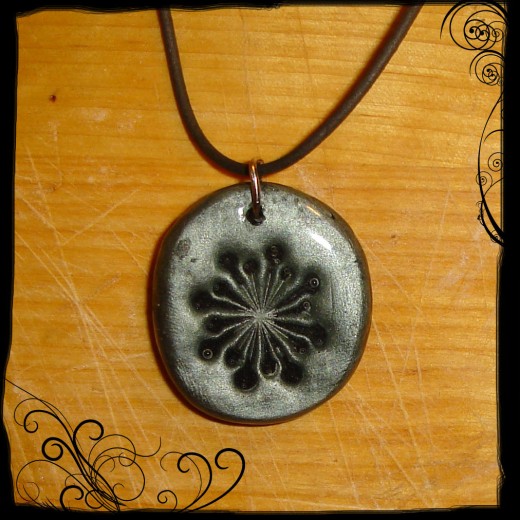- HubPages»
- Arts and Design»
- Crafts & Handiwork»
- Jewelry Making
How To Make a Polymer Clay and Resin Pendant
I love making resin and polymer clay pendants. They are two of my most favorite things to work with. The main reason is because clay and resin are easy to work with and I always come out with awesome, professional looking pieces. The bulk of the time spent making these pendants is due to resin drying time. Though it may take a bit longer to get the finished product, the end results are always worth it! I am excited to share this tutorial with you because It seems like many people are scared to work with clay or resin, especially resin. Never let polymer clay or resin intimidate you. It's some of the easiest stuff to work with!


What You Need:
- Polymer Clay
- Rubber Stamp
- Small Shaped Clay Cutters or makeshift cutter (for pendant shape)
- Resin (I use envirotex lite)
- 2 mixing cups and some pop cycle sticks
- Toothpick or tool to poke a small hole
- Jump Ring or bail
- Glue if using a bail

Step One: Working With The Clay
Start off by rolling out the clay about 1/8 to 1/4 inch thick. Then take a rubber stamp and stamp whatever design you like into the clay. Once the design is stamped, cut out the pendant shapes with small cookie cutters or a make shift cutter like an empty pill bottle. If you are going to use a jump ring for your necklace, poke a small hole in the clay with the toothpick or tool. Now bake the clay at the recommended amount of time and temperature. After the clay is done baking, let the pieces sit and cool down for at least an hour. If you want to embellish the clay with glitter or paint, go ahead and do that now and let the pieces dry completely before moving on to the next step.
**Note** If you are going to paint the clay pieces you may want to seal the back side of the pendant with a polymer clay safe sealer.. the resin will protect the paint on the front of the pendant and the sealer will protect the paint on the back of the pendant.
Step Two: Apply Resin
Mix up your two part resin, being sure to follow the directions very carefully. Spoon out a small amount with a pop cycle stick or carefully pour a very small amount onto your pendant. Do this little by little until you feel you have applied enough to cover your pendant. Watch the resin as it reaches the edges of your pendant. It should level itself out and settle right at the edge if you apply little bits at a time. Try the best you can to keep the resin from seeping down into the hole for the jump ring but if some gets in it can be fixed. Also, you will see tiny bubbles collecting in the resin. Take a straw and gently blow on the resin to pop these bubbles.
Don't worry if you apply too much resin and it goes over the edge.. just carefully take your pendant, after about 25 minutes, and wipe it off from the edge.. maybe check a few minutes later.. by this time it should be setting up enough to allow you to wipe it off and it will not run over the edge anymore. Once you have the resin applied to your pendants, place something like a plastic shoe box over them to protect them from dust and particles in the air and let them dry for at least 24 hours before handling.
One layer of resin should be enough for these pendants but If you choose to put another layer on, make sure to wait at least 8 hours to apply the second layer.
**Note**The most important two things about preparing resin is making sure that you get equal parts of both the resin and the hardener and that you are sure to mix it together thoroughly. If you make sure of these two things, you should be okay.

Almost Done!
After the pieces have dried, add your jump ring. If any resin got into the hole for the jump ring, try poking a needle back through it- it may be thin enough that you can pierce it or If the resin is too thick to pierce you may need to drill it back through with a small drill bit. Sometimes it's better to use bails when working with thicker or more fancy pieces. If you choose to use a bail, now is the time to glue it on and let it dry.
Now all you have to do is take your gorgeous polymer clay and resin pendant and add the cord! I hope you have enjoyed this tutorial.. any questions, tips or comments?? Please let me know!



